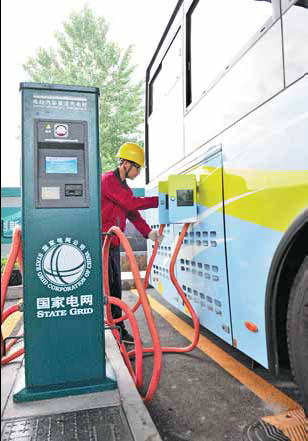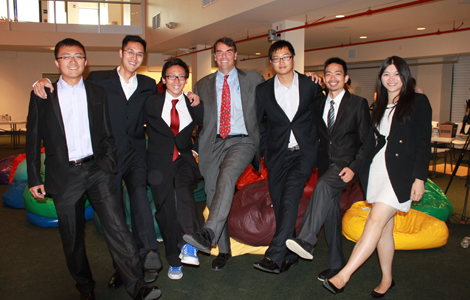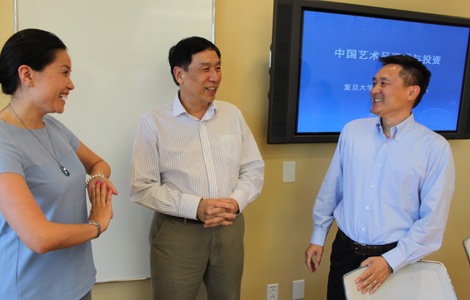New energy vehicles await fuel injection
Updated: 2013-08-05 07:03
By Jiang Xueqing (China Daily)
|
||||||||
|
A visitor inspects a BYD new energy vehicle on display at the China (Shanghai) International Technology Fair. Lai Xinlin / for China Daily |
|
A worker charges an electric bus in Zibo, Shandong province. The city operates 20 of the vehicles. Yuan Deliang / Xinhua |
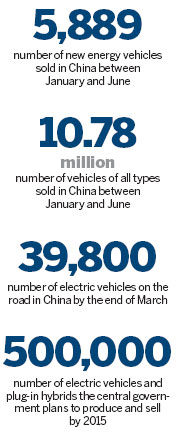
Market fails to gain traction as government subsidy policy on hold, reports Jiang Xueqing in Shenzhen.
Like many auto industry executives, Xu Weihan, chief financial officer of Shanghai Gaozhan New Energy Vehicle Sales Services, is anxiously awaiting a new government policy on subsidies for private purchases of plug-in hybrids and electric vehicles.
The previous policy, which expired at the end of last year, provided a maximum subsidy of 50,000 yuan ($8,160) for plug-in hybrids and 60,000 yuan for electric cars. When in force, it helped Shanghai Gaozhan sell nearly 400 electric vehicles and take orders for a further 400 since opening a dealership in Shanghai in November 2011.
Because the new policy is up in the air, the company's business in the first half of the year has been greatly affected.
"Many customers who had signed orders have canceled their purchases," said Xu. "The tough situation forced some major auto manufacturers, such as SAIC Motor, to pay the subsidies first. They started doing that in July. They will apply to the government for reimbursement of the subsidies when the new policy is unveiled."
The Chinese government provides stronger support to new energy vehicles in terms of subsidies than any other in the world, said Pang Yicheng, CEO of Beijing EV Future Information Technology Co, an information provider for the electric vehicle industry.
In addition to the central government, a number of local governments have also formulated their own policies to encourage purchases of new energy vehicles. In December, the Shanghai municipal government, for example, set up a yearlong program to pay subsidies of 30,000 yuan for plug-in hybrids and 40,000 yuan for electric vehicles. To sweeten the deal even further, it also offers purchasers free license plates.
"Three years ago, we realized that China has no choice but to develop new energy vehicles because of concerns about the country's energy security," said Pang. "China is the fastest-growing auto market in the world. Car sales rose 12.3 percent year-on-year during the first half of this year. So the country has a sense of urgency about reducing oil consumption by vehicles."
Weak market
However, the market for new energy vehicles remains weak, despite the government subsidies.
Just 5,889 new energy vehicles - 5,114 electric vehicles and 775 plug-in hybrids - were sold in China between January and June, but 10.78 million vehicles of all types were sold in the same period, according to statistics from the China Association of Automobile Manufacturers.
By the end of March, the number of electric vehicles on the road had risen to more than 39,800 from 27,800 at the end of 2012, said Wan Gang, minister of science and technology, at an international forum in Shanghai earlier this year.
The figures are far below the central government's production and sales target to get 500,000 electric vehicles and plug-in hybrids on the road by 2015 and 5 million by 2020.
But why is it so hard to promote new energy vehicles to private buyers? The biggest problem lies in supply and demand, according to Zhang Junyi, principal at Roland Berger Strategy Consultants, who specializes in the automotive industry.
"Consumers are highly price-sensitive. Even if we take subsidies into account, the prices of new energy vehicles are still higher than those of conventional vehicles because of underdeveloped battery technology," he said.
For example, the price of the e6 model, an all-electric crossover car - half sedan, half SUV - manufactured by BYD Auto Co, is 369,800 yuan before subsidies. Although customers will receive a subsidy of 60,000 yuan from the central government and a further 60,000 yuan from Shenzhen's local government (although the local subsidy varies from place to place), the car is still more expensive than conventional gas-powered vehicles in the same category, which usually cost 100,000 to 150,000 yuan.
So far, around 3,000 to 4,000 e6s have been sold to private buyers, mostly in BYD's hometown of Shenzhen in Guangdong province.
"At present, we are mainly focusing on the public transport market. Once demand for the BYD e6 rises significantly in that market, we will move into mass production, which will benefit consumers by bringing the price down," said Wang Aihui, marketing director of the Green Public Transport Division of BYD Auto Sales Co.
The company has sold 820 e6 models for use as taxis and 500 as police cars, plus 935 of its K9 all-electric buses, in several cities, including Shenzhen, Changsha in Hunan province and Xi'an in Shaanxi province.
Craving for luxury
Some industry experts said Chinese auto manufacturers have failed to develop their products in accordance with demand trends as outlined by market investigations.
For example, in large cities such as Beijing, Shanghai and Guangzhou, consumers are starting to buy their second or even third car, and most of them are embracing luxury brands such as BMW.
"The Chinese urban middle class has not yet satisfied its craving for luxury brands. It's hard for them to bypass this stage and head toward a green lifestyle, unless they drive electric cars produced by BMW," said Pang of Beijing EV Future Information Technology. "Although some white-collar workers who already have a car want to buy an electric vehicle, demand is not high enough to support mass production."
Pang argued that cities at prefecture-level or lower, where everyday activities take place within a radius of 50 kilometers and there is more space for parking, could be prime markets for electric vehicles.
Although motorists in smaller cities are anxious to buy cars, their budgets are limited and they have to minimize their running costs. Therefore, electric vehicles priced at less than 60,000 yuan would be an attractive option.
High-end users are also a potential market, similar to US motorists who own electric cars made by Tesla Motors Inc.
"For rich people who have plenty of time to do what they want, buying an electric car is like putting on a tag that says, 'I'm cool. I'm an environmentalist and a person with high social status,'" said Pang.
So far, no Chinese manufacturer has developed a new energy vehicle that targets high-end users. Only about a dozen electric vehicle models are available in the Chinese market, and some of them have not been on the road long enough to provide an accurate assessment of their capabilities.
Lack of charging facilities
Another factor restricting the growth of new energy vehicles is the snail's pace at which charging facilities are spreading.
The State Grid Corp of China built just 156 charging stations and battery-switching stations nationwide in 2011, plus 6,252 "charging poles", wall-mounted or freestanding electricity points, specifically designed for use by new energy vehicles.
In recent years, Shanghai Municipal Electric Power Co has built about 20 charging stations and erected 1,800 charging poles in the city, but the facilities are rarely used. Recognizing this fact, the company decided to change its strategy and so, to avoid wasting resources, it only erects charging poles in response to requests from drivers, according to Xu.
It's a chicken-and-egg scenario; if charging facilities are not readily available nationwide, the extensive use of electric vehicles will be impossible, said Roland Berger's Zhang, who urged grid companies and automakers to improve cooperation in this field.
Auto industry professionals also emphasized that the distribution of public charging facilities has a huge influence on the use of electric vehicles.
"If you buy an electric vehicle with a range of more than 100 km and live in a big city such as Beijing, you have to consider whether there is a charging station near the place you intend to visit," said Wang. "We hope that the upcoming central government policy will make it compulsory for newly built shopping malls and five-star hotels to have charging poles installed on their parking lots."
To encourage better infrastructure development, Pang suggested the government break up the power supply cartel operated by State-owned companies such as State Grid and China Southern Power Grid Co. That would allow a greater number of private companies to participate in the construction and operation of charging facilities.
The central government should also change the way it distributes subsidies. Instead of giving the money to auto manufacturers through local governments, the cash should be paid directly to the consumer, said Pang. This would prevent local authorities from only supporting local companies and would open up the market to fair competition.
"If the local government wants to stand firm in the promotion of new energy vehicles, it should invite open tenders for the supply of plug-in hybrids and electric cars, or even have a trial period for different models to see which is the most suitable for the city," said BYD's Wang.
Contact the writer at jiangxueqing@chinadaily.com.cn
Chen Hong and Zhang Yuchen also contributed to this story.
(China Daily USA 08/05/2013 page1)

 Fly for adventure at US air show
Fly for adventure at US air show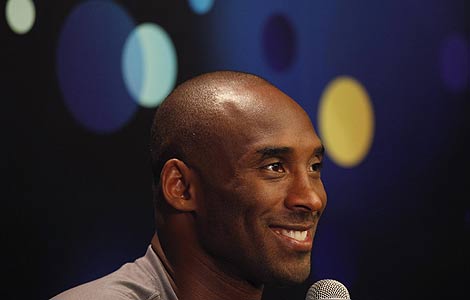
 Kobe Byrant meets fans in Shenzhen
Kobe Byrant meets fans in Shenzhen
 New Zealand milk stokes fears
New Zealand milk stokes fears
 Yemen enhances security over embassies
Yemen enhances security over embassies
 Chinese heavy ground combat vehicles join drill
Chinese heavy ground combat vehicles join drill
 Police find kidnapped baby alive in Henan
Police find kidnapped baby alive in Henan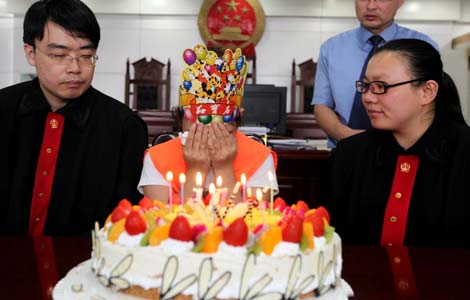
 Privacy 'needed' for young offenders
Privacy 'needed' for young offenders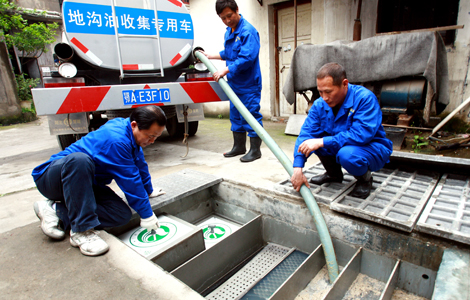
 GPS devices to tackle food waste problem
GPS devices to tackle food waste problem
Most Viewed
Editor's Picks

|

|
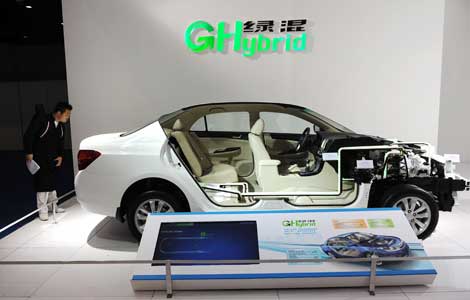
|
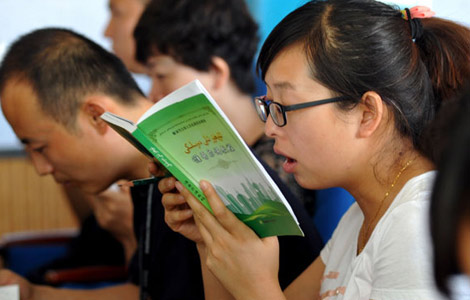
|
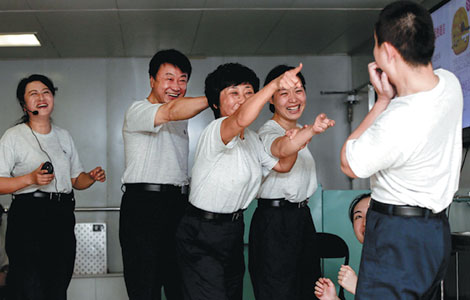
|

|
Today's Top News
Overseas investors welcome to bid in Beijing
US extends closure of embassies
New Zealand milk stokes fears
Riding the clean energy boom today
Magnetic attraction for EU SMEs
Mugabe wins Zimbabwe presidential election
EU solar deal hailed as blueprint
Shanghai probes sex claims against officials
US Weekly

|

|

